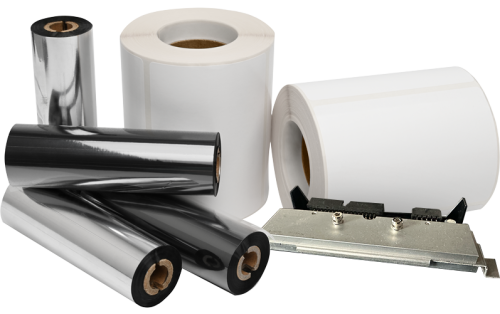Using labels in the logistics sector
Labels play a crucial role in the efficient functioning of warehouses and distribution centers. They serve as a means of identifying, organizing, and tracking products, which is essential for inventory management, order fulfillment, and overall operational productivity.
In this article, we will explore the various aspects of using labels in warehouses and how they contribute to smoother operations.
Importance of Labels in Warehouses
- Inventory Management: Labels are used to mark and categorize products, making it easier for warehouse staff to locate and count items accurately. Each label typically contains information such as SKU (Stock Keeping Unit), description, quantity, and location, enabling precise inventory tracking.
- Organization: Labels help in organizing products within the warehouse. They can indicate the designated storage area, rack, shelf, or bin, reducing the time and effort required to find specific items. Proper organization minimizes the risk of errors and ensures faster order fulfillment.
- Order Fulfillment: Efficient labeling systems are crucial for order picking and packing processes. Workers can quickly identify the items needed for specific orders, reducing picking errors and improving order accuracy. This efficiency translates into faster order processing and improved customer satisfaction.
- Quality Control: Labels are also used for quality control purposes. Products can be labeled with important information such as inspection dates, lot numbers, or expiration dates, ensuring that the warehouse staff can identify and manage items with specific requirements.
- Hazard Identification: In some cases, labels may indicate hazardous materials or special handling instructions. This is vital for safety compliance and ensuring that workers are aware of potential risks associated with certain products.
- Tracking and Traceability: Labels often include barcodes or QR codes that can be scanned using technology like barcode scanners or mobile devices. This tracking system provides real-time visibility into the movement of goods within the warehouse, making it easier to monitor inventory levels and locate products.
- Returns and Reverse Logistics: Labels assist in managing returns and reverse logistics by clearly marking products for restocking or processing returns. This helps streamline the reverse logistics process and reduces the chances of returned items getting misplaced.
Types of Labels
- Product Labels: These labels are affixed directly to individual products and typically contain information such as the product name, SKU, description, and any required barcodes.
- Location Labels: Used to mark storage locations within the warehouse, these labels provide information about the specific rack, shelf, bin, or aisle where items are stored.
- Pallet Labels: Often used in large warehouses or distribution centers, pallet labels contain information about the contents of pallets, such as the products included, quantity, and destination.
- Barcode Labels: These labels feature scannable barcodes that can be linked to an inventory management or warehouse management system, allowing for efficient tracking and data entry.
- Hazard Labels: When handling hazardous materials, labels with symbols and warnings are essential to ensure the safety of workers and compliance with regulations.
